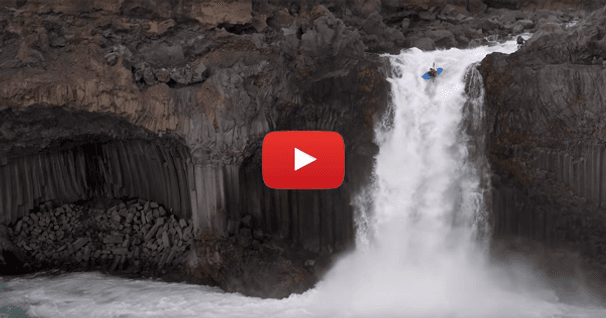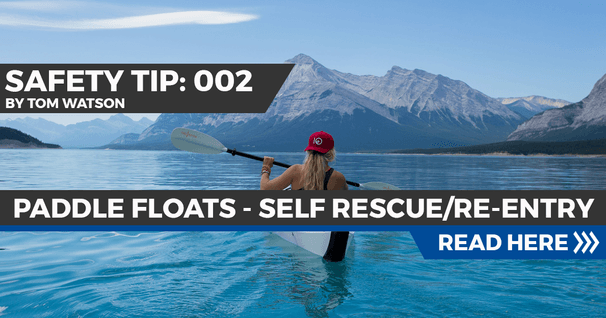Our height and weight when choosing a kayak
Every kayak is different just like how every human is different. Some kayaks work for people and not for others. So it's important to choose a boat that is perfect for you and your uses in order to have the best time out on the water.
-
How do we take into account our height and weight when choosing a sea kayak?
I want to have a quick discussion on choosing a sea kayak and what to look for when it comes to sizing depending on our height and weight.
One of the main questions that I often get is “this is my height, this is my weight, what length of sea kayak do I need?”
While our height and our weight are very important in choosing a sea kayak, it does not directly affect the length and size of your kayak. I'm going to make a lot of generalizations here, so bear with me. This is more directed to newer paddlers that are getting into sea kayaking.
The type of paddling you're looking to do will dictate more of the shape of the kayak, and then you will look for a kayak that will fit your particular body type. For example, are you going to be touring a lot? Are you going to be exploring? Are you going to be wanting to go from point A to point B in a very efficient and easy manner? Then you’re probably going to want a slightly longer kayak with a longer water line which will give you better speed, better efficiency, and better tracking – which is how well the kayak will maintain a straight line when you're paddling it.
On the other hand, if you want a kayak for play, or for very rough conditions, or for surfing, you're probably going to want something a bit shorter.
There are touring kayaks that have very long water lines, however, they're designed in such a way so that when you put them on edge you shrink that water line and therefore it becomes a much, much more maneuverable boat.
Or like in my case, it is a long kayak, but it has a lot of rocker. That water line, or the amount of kayak that's in the water from front to the back is shorter. It gives the kayak the ability to be extremely maneuverable.
Getting back to the relationship of height, weight and fit of the kayak, what’s really important is, most manufacturers will make (of their most popular kayaks) a high volume, a medium volume and a low volume boat. What that means is that same boat will fit three different types of paddlers: a petite paddler, a medium-size paddler and a larger paddler. The whole design will be very similar, it will behave similarly for those three paddlers, but the cockpit and outfitting and the way it is designed will fit those different paddlers much better.
For example, a low volume version will probably have a lower deck so that a smaller paddler can have good contact with their hips or with their thigh braces being that the deck is lowered.While a high-volume kayak will accommodate a much larger paddler with much longer legs.
So, for touring, you will find certain models that have low, medium, high volume. In play boats, you will find low, medium, and high volumes.
Now, here's another example of exceptions to these rules. I'm an exception. I'm 6 feet tall – so I'm a little bit taller than average. But I'm very skinny – I come in around 165, 170 pounds. My weight puts me in a low-volume kayak, my height puts me in a medium-volume kayak. I happen to choose low-volume kayaks because that's just what I like. I like being able to maneuver a kayak very easily and even though I might be a little cramped because of my long legs, I prefer being able to throw my weight around and have a kayak that reacts to what I want to do.
If I sat comfortably in a medium volume kayak, I would need to add a bit of weight in the hatches to make the kayak maneuver the way I'd want to because I just don't have enough weight for the average way that that particular kayak might be designed.Once again, I'm generalizing, but once you narrow it down to a couple of different models that might be of interest to you, then you can start thinking of how it will fit your particular body.
The last little nugget I want to leave you with this: make sure you test whatever kayak you're interested in. It's one thing knowing that a kayak will be good for you, it's another to actually sit in it and see if it responds the way you want it to. I understand that when you're just getting started you might not know what that's going to feel like. If you're a very experienced paddler, you might sit in a kayak and it might do exactly what you want. But if you don't really know what you're doing just yet, I'd say try to get advice from other paddlers. Go to kayak stores, go to conventions, go to symposiums where you might have the chance to work with lots of different instructors and they will give you tips on a kayak that will fit you well and you will also be able to test several different models and find the one that really works for you.
Lastly, it's always a good idea to try to find a kayak that you can grow into. It might seem maybe a little too tippy, or it might seem a little hard to maneuver at first. A lot of times those kayaks are the ones that are going to allow you to push your skills and then you're going to be able to use that and grow as a paddler for years to come.
I know that avid boat builders follow this channel, I would love it if you would chime in with some of those exceptions or give some tips to kayakers that might be looking for something new in the comments. I would love to read them as well. If there's any questions please also leave a comment, I'll try to answer as much as I can.
I hope that was helpful. Please subscribe to the channel if you’d like, I’m always trying to put these videos out. This is Luke Rovner for Kayak Hipster, thank you for watching and see you next time.
TAHE 10'6 & 11'6 SUP-YAK Inflatables
2-in-1 Kayak & Paddle Board complete packages for single or tandem use.
Related Articles
Waterfalls. Rapids. Waves. Surfing. Watch the best whitewater videos of the past year.
Protecting your feet from cold and abrasive/rough surfaces are the two primary functions of paddling…
A paddle float aid is a critical self-rescue/re-entry tool for the lone kayaker. When used as an…
One of the most common, if not the most common, faux pas in paddle boarding is to hold and use…




